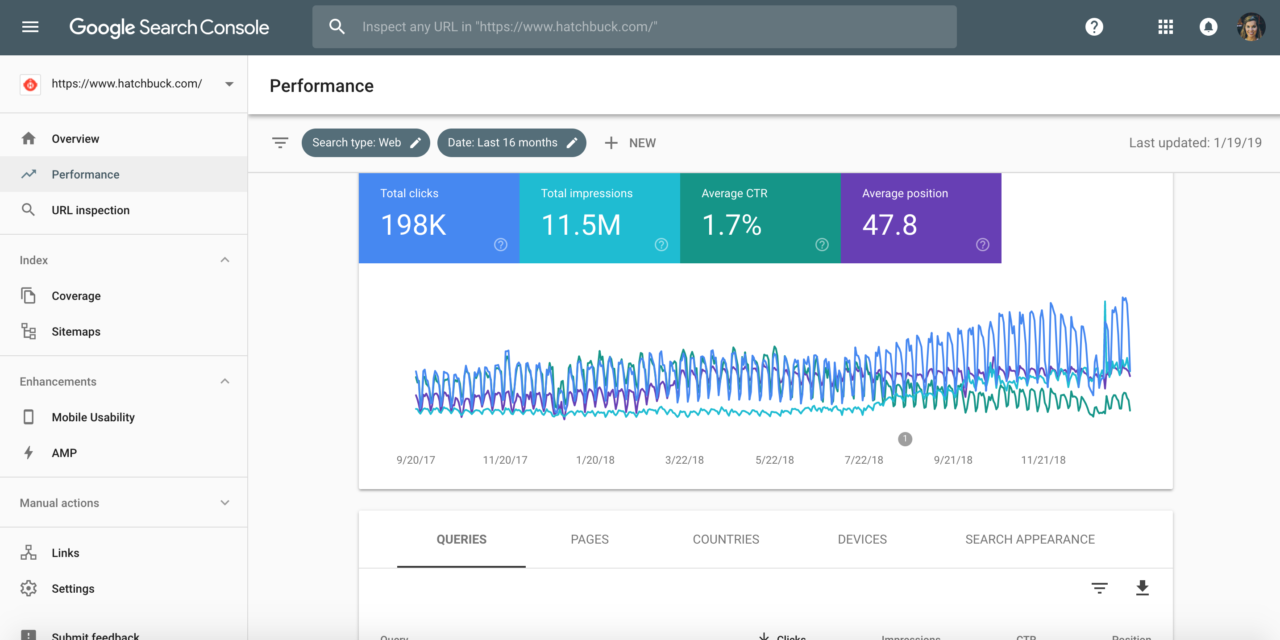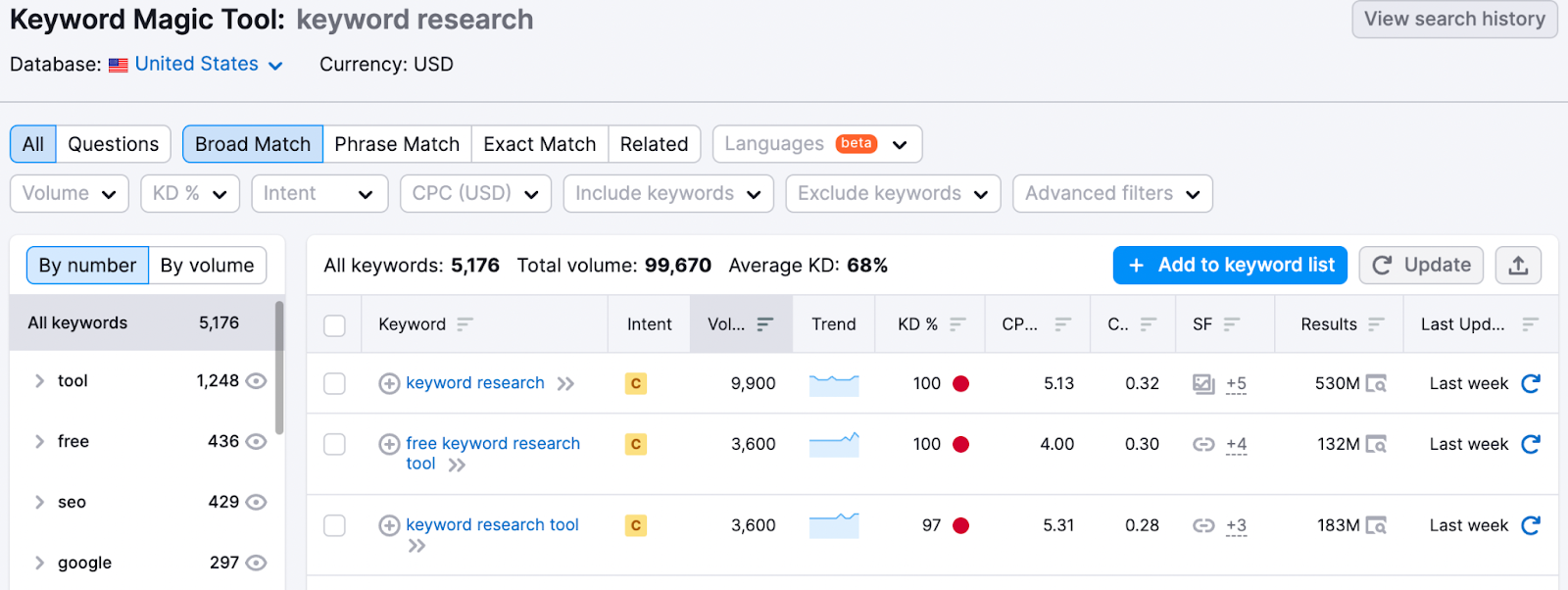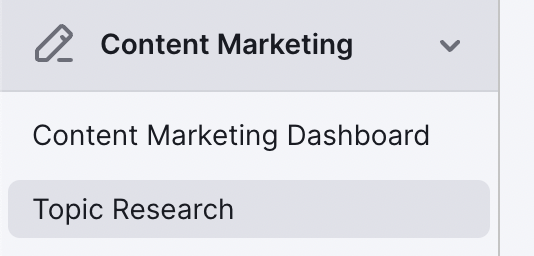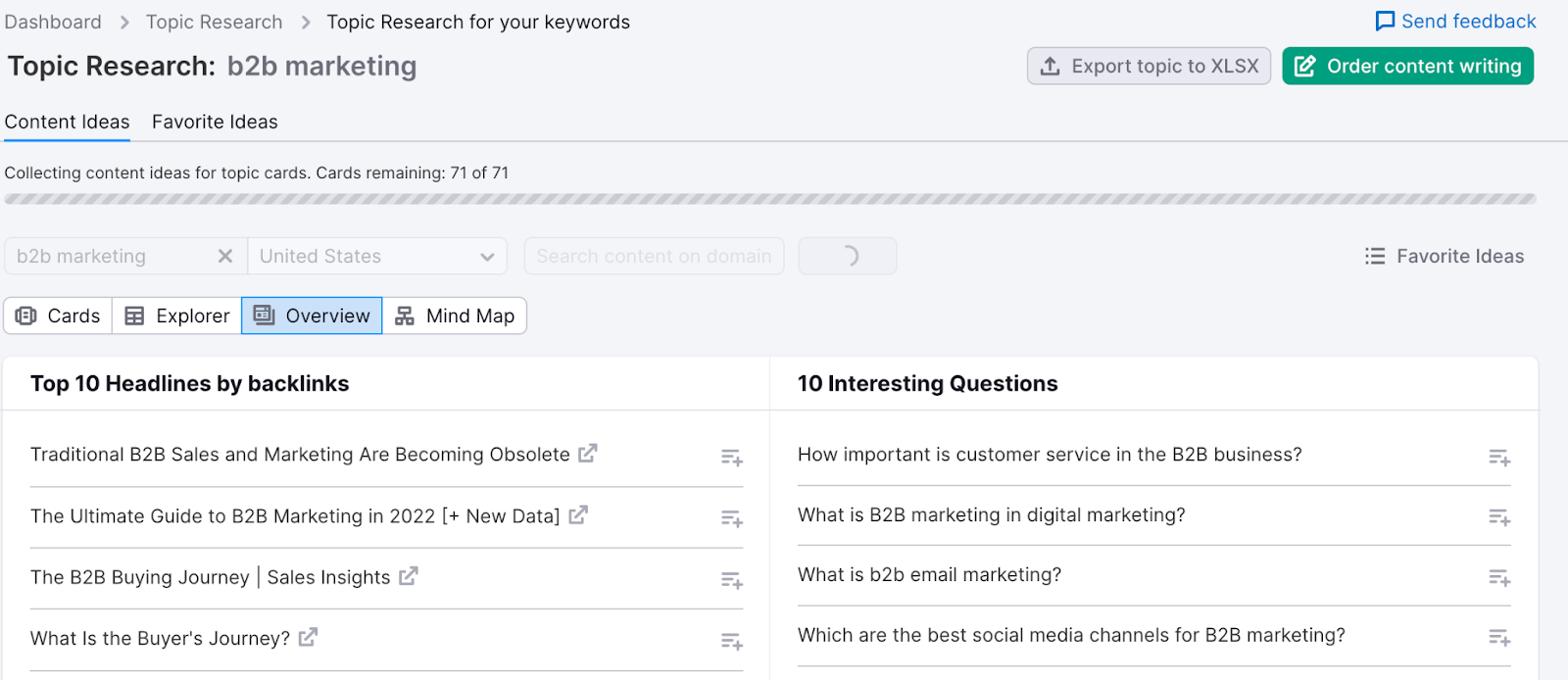
I'll be upfront, this is a real beast of a keyword research guide. It includes everything you need to be able to perform a really in-depth analysis of your keywords, and it will set you apart from your SEO competition, especially if you don't have the budget to pay an SEO agency thousands to do this.
Keyword or search query research is the most important part of any SEO strategy and by investing more of your time here, you will reap the rewards further down the line.
I’ll break this task down into manageable steps so that you can hopefully follow this fairly easily. This guide has been written in conjunction with this keyword research template I created in Google Sheets which should be useful
Step 1: Create a copy of our template document
We’re going to be storing all of our research and data in a spreadsheet so that we can analysis everything in one place. We’ve created a keyword research template in Google Sheets with some useful tips to help you execute this.

Step 2: Identify your current keyword rankings
Use SEMRush or an equivalent tool to discover what your current keyword rankings are. My advice is to do this for the USA as it’s the biggest market and has the most search data. This is especially useful for B2B marketing when some terms can have very low volume. If however you are only interested in a specific audience then use that market.
Once you have discovered your current keyword rankings you can start to look at this existing data and look at how you use this aid you new SEO strategy. You should start by exporting this current ranking data to a .csv file and then import into Google Sheets, use the ‘A’ tab on the template provided for this.

2.1 Highlight the keyword rankings on page 2 & 3
With this ranking data it’s time to develop some insights that can be helpful moving forward. Firstly, you should look for rankings that are between position 20 and 40, this means you are most likely appearing on page 2 or page 3 of a Google search result.
This is important because it shows that you are not far off page 1, and perhaps with some more SEO work you can jump up the rankings without doing as much work as you would normally require when you don’t rank for the keyword at all.
2.2 Highlight the keywords with buyer intent
Here, we are looking for keywords and phrases that imply ‘intent to buy’, so, for example, if a search phrase contains the word “solution” or “software” we can assume they are looking for a solution, this implies that they have some intent to buy.
Someone typing in “accounting” vs someone typing in “accounting software” would be a great example of this. These are the keywords we want to highlight and prioritise because these are the searchers that usually convert on a website.
Some keyword research tools have included intent in their keyword reports but I have found them to be unreliable. There is a much more bespoke and easy way to do this yourself using a REGEXMATCH formula in Google Sheets. This formula allows you to review a phrase in a cell and look for certain words.

2.3 Highlight the pages that rank for those keywords
The next step is to not just look at the keywords you rank for but to see which of your pages are ranking for these keywords. This will tell you which of your webpages are performing the best from an SEO perspective. This is essentially when it comes to mapping out your target keywords further on in this process.
Step 3: Analysis Google Search Console Data
If you do not have Google Search Console set up then you can ignore this part, but, I would recommend you go away and set it up as it’s one of the best SEO tools you can use and it’s free.

3.1 Identify queries with high impressions and low CTR
An opportunity looking at the data from Google Search Console is a query that you perhaps have impressions for but no clicks, so a low CTR (Click Through Rate). Usually this means you rank outside the top positions but you rank high enough to get a decent amount of impressions.
There is likely to be correlation here between your keyword rankings and the queries you find in search console, but, you are likely to find a wider variety of search queries in search console which can be really helpful to spot hidden gems.

3.2 Highlight search queries with high intent
As with the previous step we now want to highlight the queries that have high intent and show that someone is potentially in-market to buy. We can use the same REGEXMATCH formula as we used in the other sheet here.
Step 4: Perform a keyword gap analysis
A keyword gap analysis compares the keywords multiple websites rank for and produces a list of where those websites rank for the respective keywords. It’s a useful analysis to conduct on websites similar to yours because you can identify where there are potential gaps in your SEO strategy. It can also show you where you are strong and weak vs similar competition in terms of your search engine ranking position.
4.1 Choose 3 competitors who are very similar
It’s important to choose competitors whose service offering is very similar to yourselves otherwise you will not get any insightful data from this gap analysis.
Also, if you are a SaaS company and you provide a platform solution, I would recommend choosing competitors who provide platforms although you may want to do a further analysis later on that does a competitive analysis against point solutions too.
4.2 Run a keyword gap analysis in SEMRush (organic)
Here is the point and click part of this. Drop in the 3 domains into the keyword gap analysis tool into SEMRush and watch it go. When it’s done you can then export this list to a .csv file so you can then import it into Google Sheets for further analysis.

4.3 Identify missing keywords
A missing keyword is one that the other domains rank in the top 100 for but your website does not. If you have compared some very relevant competitors these keywords are worth reviewing and considering as part of your research. Using the keyword gap analysis tool, use the keywords that have been identified as missing and add these into sheet C in the keyword research template. You can then also apply the intent filter again to ensure you are only looking high-intent keywords.

Step 5: Gather your ‘seed’ keywords
A seed keyword is basically just the term you input into a keyword research tool as the first search, therefore being the seed for all future keywords. For this step you need to list as many solutions and services as possible to ensure everything you do is covered. It’s also important to remember that this list should not include product or brand names.
An example seed keyword for Salesforce would be CRM software. For some companies this will be a very short list and for others it may be pretty long depending on what your company offers. For a platform product it may be better to think of this as use cases, list all of the potential use cases for your product and that can also be a good way to get a seed keyword list.
To give you an idea of the end product, you can see on Wrike's website that they list their use cases on the website. You can bet that there is some keyword research and SEO work that has gone into this list and what they are called.

This list will be used as the ‘seed keyword’ for your keyword research. This is just the original word or words you type into a keyword research tool which enables it to look for those keywords and similar ones. This means you don't need to think about every variation of the term but if you know ones that are widely different ways of saying the same thing it's worth including. From this you will have generated your seed keyword list.
- Paste in keywords from your current rankings & high-intent
- Paste keywords from GSC data & high-intent keywords
- Paste in relevant missing keywords from KW gap analysis
- Add in keywords from your own ideas and around the business

At the end of this you should have a list of keywords that are relevant to your business and it gives you a really good starting point for your keyword research.
Step 6: Use your seed keywords for research
Now it’s time to actually start doing some keyword research. I typically use SEMRush for keyword research as the Keyword Magic Tool is powerful and easy to use, you’re not going to find much better than this on the market. Now you have your list of solutions and services, one-by-one, input these seed keywords into the keyword magic tool in SEMRush.

You then have the option to see matches for either broad, phrase, exact or related keywords. The description of how each of these match types work in SEMRush can be seen below.
- Broach Match: Any variation of your seed keyword or keyword phrase in any order.
- Phrase Match: Exact keyword or keyword phrase in various orders.
- Exact Match: Exact keyword or keyword phrase in exact order.
- Related: A list of keywords that are similar to your seed keyword.
Depending on the seed keyword used, its best to start with Broad Match and then gradually look through the other match types depending on the relevance of the related keywords that appear. When you find a relevant keyword you can check the box and when you are ready add it to a keyword list.
6.2 Update your metrics in keyword manager
Once you have completed your research and built your keyword lists its worth refreshing and updating the metrics in the lists to ensure you have all the data possible. This should be pretty quick but there is a limit to the number of keywords you can update at once so just keep an eye on that if you have a really long list of keywords.

6.3 Export your data to the template
Once you have updated the keyword metrics in SEMRush you can now export all of the data back into the tab labelled 'Keyword Research'. I usually trim and format the data to look like how it does in the template and as is shown in the below screenshot.

Step 7: Create an SEO keyword map
The next step is to create what is usually called a keyword map. This is basically a mapping document where you assign a target keyword or phrase to the pages on your website. Usually these pages are just the solution and service pages and this does not include your blog (covered in a content plan) and it doesn't include what we call utility pages, like the contact page, about us etc.

7.1 Crawling your website
Don’t worry you don’t have to list out all your pages manually if your website has a lot of webpages. You can use a tool such as Screaming Frog to scrape your website to export a list of all of your web pages. It will also export the URL and the page titles and even Heading 1 if you want to include that in your keyword map.
At this point you can cross-reference the data from Step 2 and list the keywords each web page ranks for next to the page, along with the average position. You’ll then start to build up a picture of how your website’s pages are performing from an SEO perspective.
7.2 Match your current rankings to web-pages
First of all you should map the current rankings this will include the data on whether or not the page is ranking between 20 & 40 and if it’s therefore an opportunity.
7.3 Map your target keywords to pages
Next, you should assign 1 keyword to each page. The reality is that a page does and will rank for multiple keywords that are very similar but from my experience it’s worth just picking one and then letting the algorithms do the rest.
Some agencies will recommend assigning groups of keywords but IMO the algorithms do a good job of looking at synonyms of keyword etc so for ease of planning and to avoid confusion I always recommend targeting one keyword or phrase with the assumption you are therefore targeting a group of similar keywords. (Don't forget you can adjust these as time goes on)
7.4 Add in draft titles for new pages from the gap analysis
Based on the keyword gap analysis and the keyword research you may have unearthed the requirement to build some more web pages to target keywords you are missing. You should add these pages into the keyword map as a ‘draft’ page that needs to be created.
7.5 Create AI-assisted SEO Content Briefs
Using the keyword map you can now use Surfer SEO to create AI-assisted content briefs. These briefs should be used to optimise the on-page content to ensure it is targeting the keyword you have inputted into your keyword map.

Surfer is one of, if not the best tool for producing detailed SEO content briefs. You can even generate live links for copywriters so they can paste the copy into it and it will update your SEO score in real-time. It's a really powerful tool for creating data-driven content that is useful!
You can then link these content briefs to your keyword map so everything is in one place.
Step 8: Creating an SEO Content Plan
So far we have focused on solution and service landing pages as these are the ‘money’ pages on your website, but, there is only so much you can do on one page on your website. To improve the overall visibility and authority of your website you need to provide useful content beyond trying to sell something, this is where a blog comes in.
If you can imagine an iceberg of content with the solution page at the top and blog content at the bottom, that’s kind of how I see it. Blog content augments the performance of the pages that actually provide conversions and it's the fuel for online traffic growth. Content is king, as Bill Gates said.
8.1 Choose your main topics (3 - 10)
Depending on the size of the topic you should try and choose no more than 10 main topics to cover. Typically, these align with your core services. So, as an example if you are an SEO agency, SEO is a huge topic, then within that you other other smaller more specific topics such as on-page SEO, Link Building and SEO tools.
8.2 Use topic research in SEMRush
In SEMRush there is a tool under the ‘content marketing’ section called topic explorer. Here you can go beyond keywords and look at the articles, questions and the headlines that are performing the best in a certain area of interest.

This is really useful as you can get some tips on what to write about and what headlines perform beyond just looking at keywords alone. You should combine this topic research with keyword research and you can also use these handy tool

8.3 Plan out topic clusters in the Google Sheet
Once you have started to build out your topic ideas you should start to put these into a very simple but clear SEO content plan. It doesn't have to be anything complicated, just a list of articles you plan to write. The important thing is to group them into topics and to include the target phrase or questions you are answering in the plan so you know it is based on data rather than intuition.

Ideally you should be producing a piece of content a week, the more the better, as long as the quality remains high. As with all content, although we are doing this for SEO, this is about producing really useful and quality content that people are searching for online, the customer always comes first!
Step 9: Putting it into practice
So now you have the template available to you to be able to execute an SEO strategy with a solid foundation based on thorough research and analysis.
The reality of SEO work is that you probably won’t see the results of your work for a little while and obviously executing on this plan will take time in itself.
Find a B2B SaaS Expert
We've collected a directory of B2B SaaS experts and agencies that we've reviewed and categorised based on service and specialism for your review.














